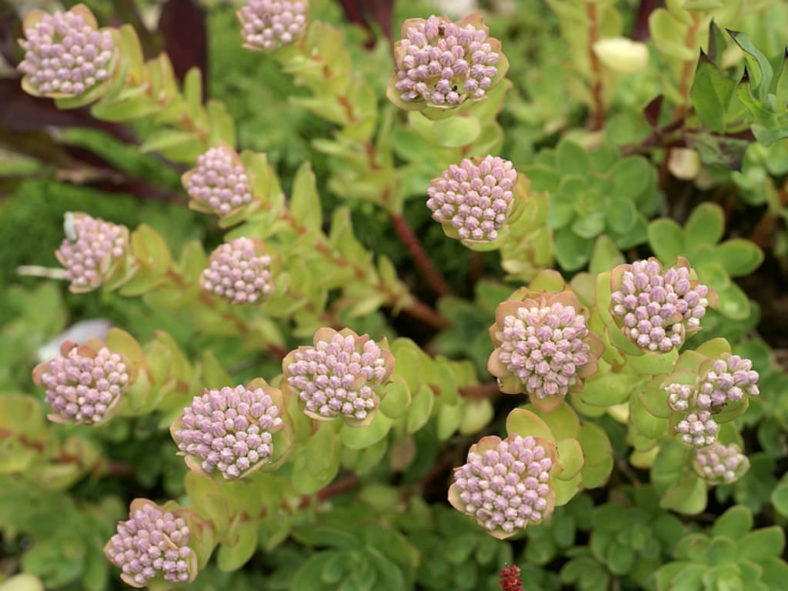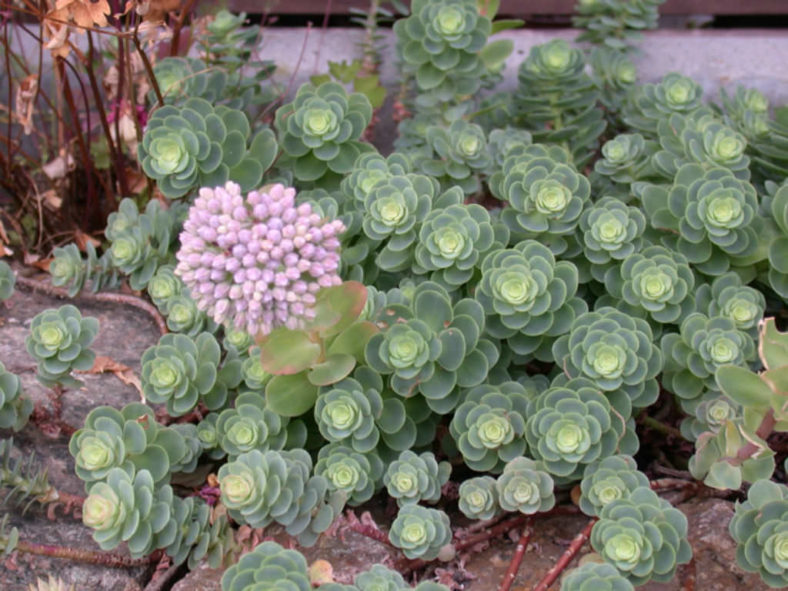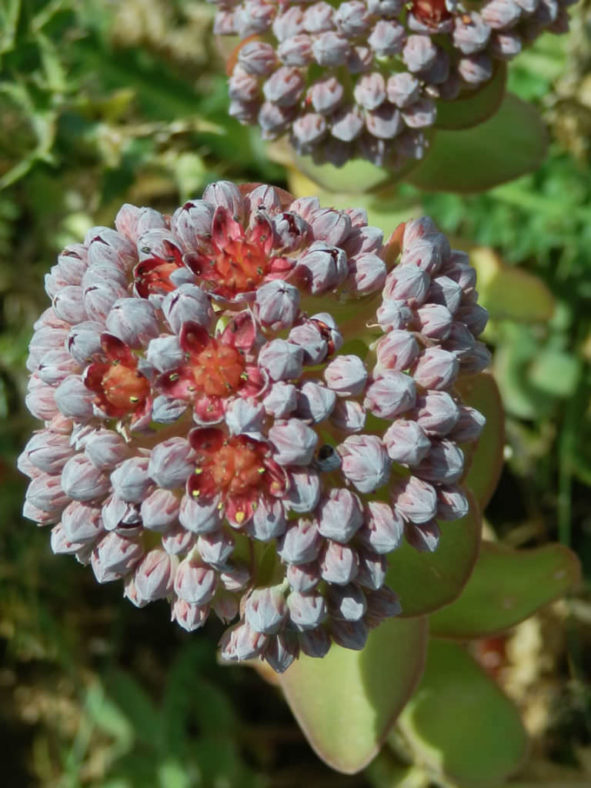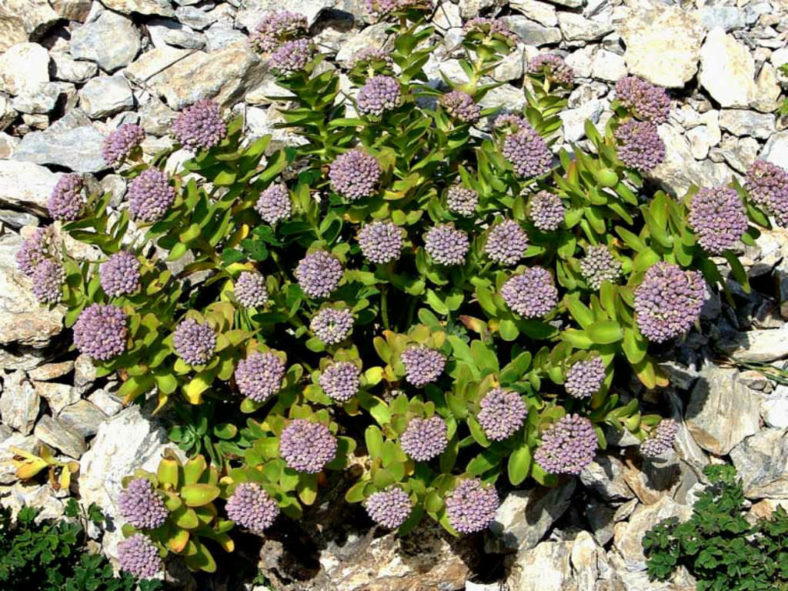Scientific Name
Hylotelephium anacampseros (L.) H.Ohba
Common Name(s)
Evergreen Orpine, Herb of Friendship, Love-restoring Stonecrop, Love Restorer
Synonym(s)
Anacampseros sempervirens, Sedum anacampseros, Sedum rotundifolium
Scientific Classification
Family: Crassulaceae
Subfamily: Sempervivoideae
Tribe: Telephieae
Genus: Hylotelephium
Etymology
The specific epithet "anacampseros (an-ak-KAM-ser-os)" means "love-restoring" and refers to the belief that this succulent has the power to bring back the love that was lost.
Origin
Hylotelephium anacampseros is native to southwestern Europe (eastern Spain, southern France, southwestern Switzerland, and northern Italy).
Description
Hylotelephium anacampseros, formerly known as Sedum anacampseros, is a succulent plant that produces a cluster of decumbent, sparsely branched stems with greyish-green or blue-green leaves. The stems can grow up to 6 inches (15 cm) long. The leaves are rounded, measuring up to 1.2 inches (3 cm) in diameter.
The flowers are star-shaped, purplish-red inside, and purple, covered with a powdery bloom outside. They appear in summer clustered at the end of the stems.

How to Grow and Care for Hylotelephium anacampseros
Light: This succulent prefers full sun. It tolerates light to partial shade in hot summer climates but will produce weak, floppy growth when grown in too much shade. Plant your H. anacampseros in an area of your garden that gets 6 hours of sunlight daily.
Soil: H. anacampseros does not need rich soil, but it does need excellent drainage. Choose a commercial potting mix for succulents, or make one yourself.
Hardiness: This plant has a tolerance to heat and drought and is cold-hardy, making it a popular outdoor succulent. H. anacampseros can withstand temperatures as low as -30 to 30 °F (-34.4 to -1.1 °C), USDA hardiness zones 4a to 9b.
Watering: The best way to water H. anacampseros is to use the "soak and dry" method. Get the soil completely wet, and then wait until it is dry before watering again.
Fertilizing: Feed annually with a balanced fertilizer. According to the package directions, apply the fertilizer to the soil in spring as new growth appears.
Repotting: Plants in containers require little more care than those in gardens. Repot your H. anacampseros when it outgrows its current pot by moving it to a larger pot to hold the plant better. Spring is the best time to repot this plant. Make sure the soil is dry before you begin the repotting process.
Propagation: This succulent can be grown from seeds, division, or stem cuttings. Sow seeds in spring. Dividing your H. anacampseros is easy and can be carried out at almost any time in the growing season, though it is probably best done in spring or early summer. Propagate by stem cuttings in summer.
Learn more at How to Grow and Care for Hylotelephium.
Toxicity of Hylotelephium anacampseros
H. anacampseros can be mildly toxic to humans and animals.
Links
- Back to genus Hylotelephium
- Succupedia: Browse succulents by Scientific Name, Common Name, Genus, Family, USDA Hardiness Zone, Origin, or cacti by Genus
Photo Gallery
Click on a photo to see a larger version.


